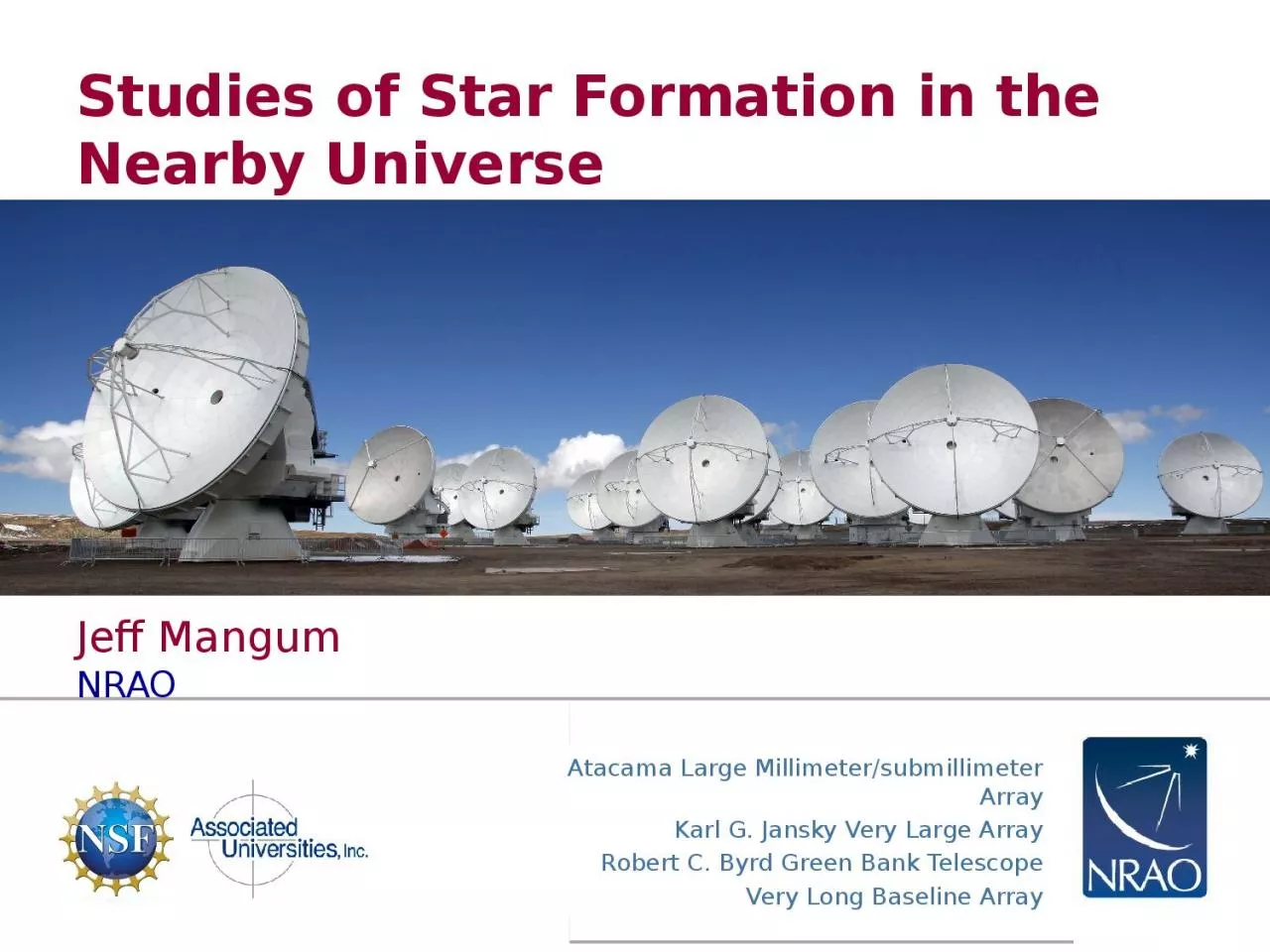

Jeff Mangum NRAO 2 Extragalactic Star Formation 3 Multitransition analysis of molecular excitation within high spatial density nH2 gt 105 cm3 and high kinetic temperature Tk gt 100 K environments ID: 1030621
Download Presentation The PPT/PDF document "Studies of Star Formation in the Nearby ..." is the property of its rightful owner. Permission is granted to download and print the materials on this web site for personal, non-commercial use only, and to display it on your personal computer provided you do not modify the materials and that you retain all copyright notices contained in the materials. By downloading content from our website, you accept the terms of this agreement.
1. Studies of Star Formation in the Nearby Universe Jeff MangumNRAO
2. 2
3. Extragalactic Star Formation3Multi-transition analysis of molecular excitation within high spatial density (n(H2) > 10^5 cm^-3) and high kinetic temperature (Tk > 100 K) environmentsAtomic fine structure transition measurements of the warm neutral and ionized gasHerschel SPIRE apodized FTS spectrum of M82 from Panuzzo etal. (2010). Spatial resolution is 43.4 arcsec. Filled circles show SPIRE fluxes measured within the same beam.Herschel SPIRE spectrum of Arp220 (Rangwala etal. 2012)
4. Extragalactic Environmental Analysis4Silicon-bearing species which track shock environments (SiO)Ions which are chemical tracers of UV emission (HCO+, DCO+)Isomer species which can be used as diagnostics of heating mechanisms within star formation regions (HCN/HNC, etc.)More complex symmetric and asymmetric top molecules which can be used as targeted density and temperature probes of dense gas (H2CO, etc.)
5. Extragalactic Heating Processes5
6. Extragalactic Heating Processes6PDR model predictions of the HCN and HNC abundances as a function of column density for varying amounts of cosmic ray (zeta) and mechanical (gamma_mech) heating from Meijerink etal. (2010).HCN/HNC ratio a sensitive monitor of heating processesHNC + H HCN + HEbarrier = 200 K
7. Extragalactic Star Formation7H2CO K-doublet excitation used as density monitorTransition ratios used as density and temperature probeMangum etal (2008, 2013)
8. Extragalactic Star Formation8
9. Extragalactic Star Formation: Spatial Density9H2CO K-doublet excitation used as density monitorMangum etal (2008, 2013)
10. Extragalactic Star Formation: Kinetic Temperature10H2CO excitation used as kinetic temperature monitorMangum & Wootten (1993)
11. Star Formation in the Nearby Universe at Band 211Trace extragalactic star formation heating processes (HCN/HNC)Measure spatial density and kinetic temperature (H2CO K-doublets)Trace UV penetration into dense environments (HCO+, DCO+)Identify shock environments (SiO)
12. 12The National Radio Astronomy Observatory is a facility of the National Science Foundationoperated under cooperative agreement by Associated Universities, Inc.www.nrao.edu • science.nrao.edu